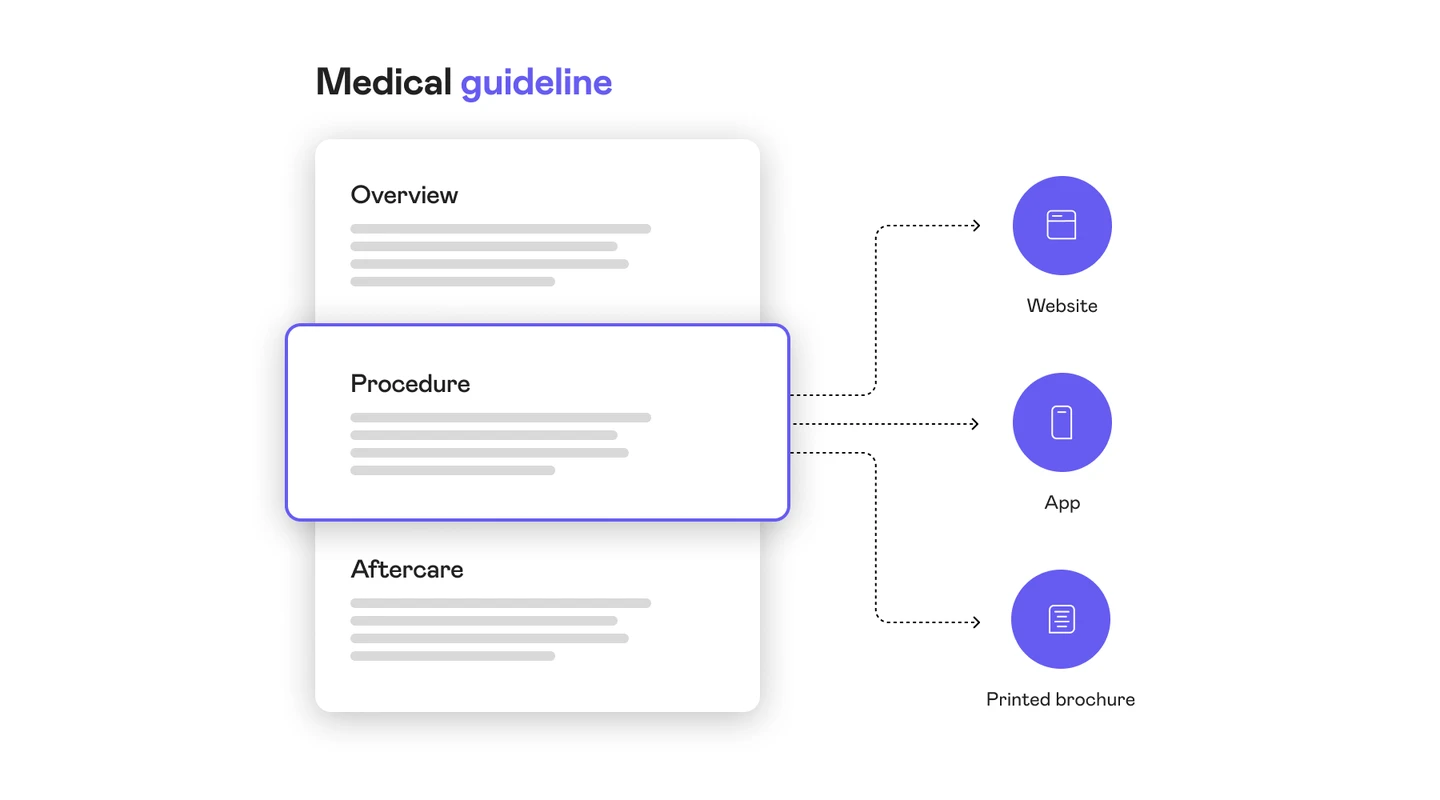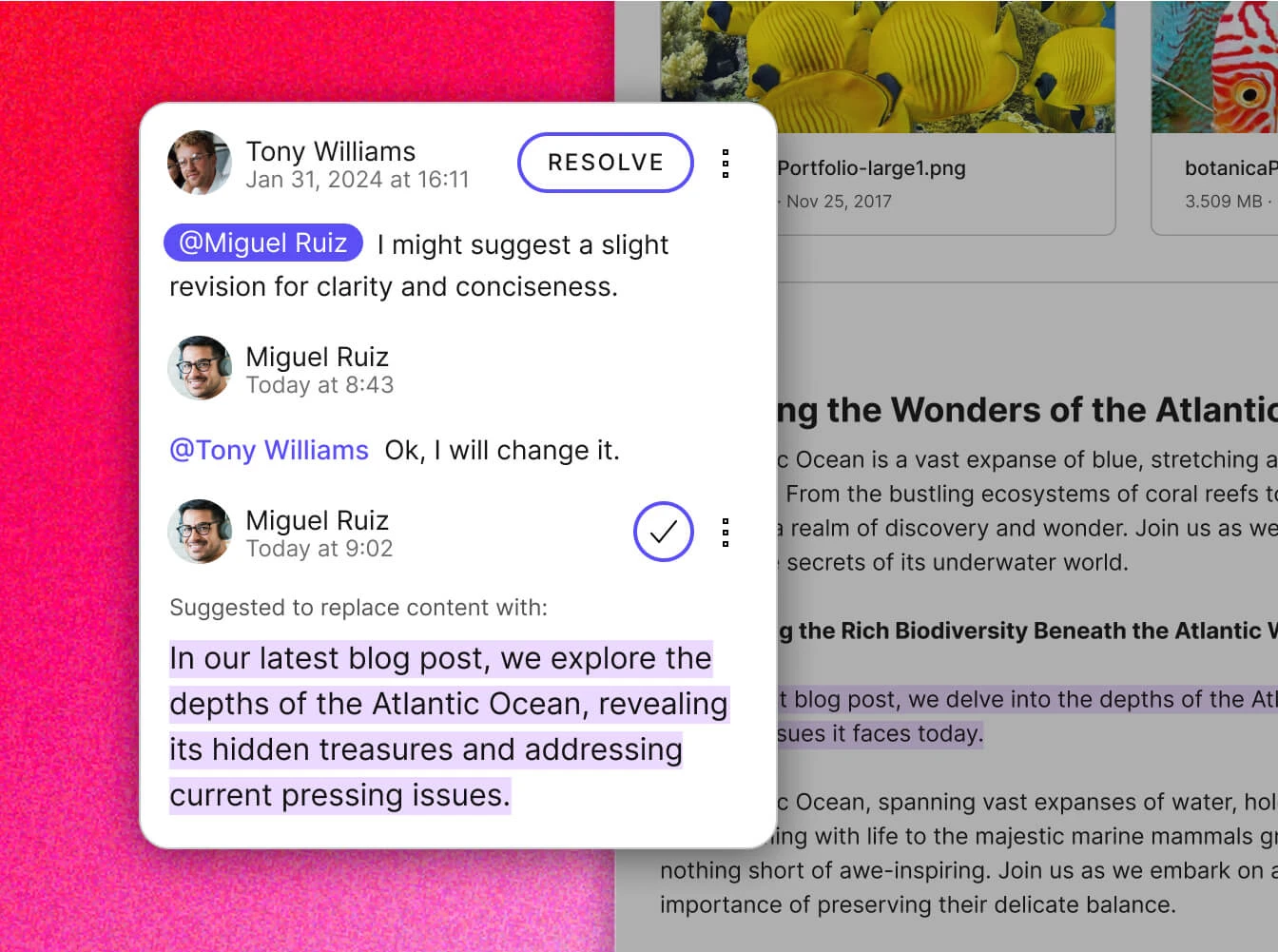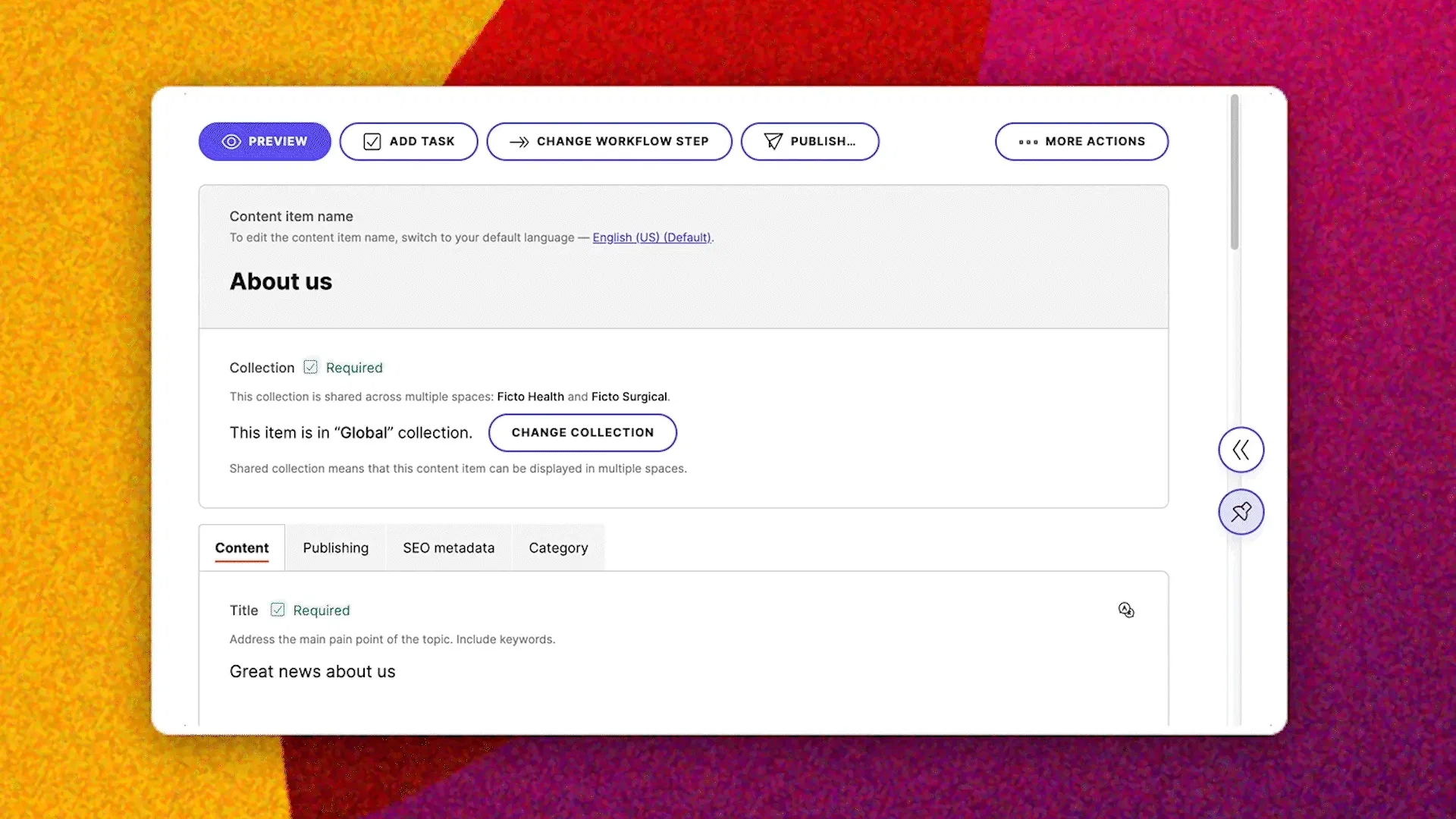Aligning healthcare content strategy with patient-centric goals
How can content reuse and strong team collaboration support a healthcare content strategy that improves patient engagement? Let’s find out.
Written by Lucie Simonova

How can content reuse and strong team collaboration support a healthcare content strategy that improves patient engagement? Let’s find out.
Written by Lucie Simonova

When people look for health information, they’re trying to understand something important about themselves or someone they care about. That’s why healthcare content has to be clear, accurate, and helpful in the moment it’s needed.
A strong content strategy built around patient needs helps healthcare teams provide the right information at the right time. But doing that well takes a thoughtful approach to how content is planned, created, reviewed, and reused.
In this blog, we’ll look at how healthcare organizations can build a content strategy that supports patient engagement—by making collaboration easier, reusing content more effectively, and shaping content around real patient needs.
Different patients have different needs. A newly diagnosed patient might want simple explanations, while someone managing a long-term condition may need more detailed guidance. Patient-centric content meets people where they are based on their condition, age, language, or health literacy level.
When content is built around patient needs, it becomes more useful and more likely to be trusted, so it can follow patients throughout their health journey.
If organizations are trying to reach patients across websites, apps, emails, and other channels, they might be using multiple different tools and platforms for storing content. That often leads to having to duplicate pieces of content, which is time consuming, and if the organization grows and the strategy scales, it can become unsustainable. In addition, duplicating content can lead to inconsistencies and even errors that might have serious consequences, especially in regulated industries like healthcare.
So, what could be the solution? Reusable content.
By breaking content into smaller parts—like a short explanation of a condition or a set of medication instructions—you can use it in multiple places without duplicating effort.
Reusable content in healthcare supports a patient engagement strategy by helping teams deliver consistent, accurate information across every touchpoint. That means that patients see the same message whether they’re reading a blog post, checking a patient portal, or getting a follow-up email.
Reusable content also helps healthcare teams move faster and reduces the possibility of errors, which is significant in highly regulated industries, as inconsistencies or errors can have serious consequences.

But for content to be truly reusable, it needs to be structured in the right way. That’s where content modeling comes in. What is it, and how does it support content reuse? Let’s unpack it.
Content modeling is how organizations organize and define their content so it’s easy to manage and reuse. Think of it like a blueprint that breaks down content into smaller, meaningful parts—like titles, summaries, images, or instructions. When these parts are clearly defined, teams can mix and match them depending on what each patient needs or where the content will appear.
This structure supports reuse across different channels and audiences. For example, the same set of medical instructions can show up on a website, inside a mobile app, and in a printed handout—without having to be manually rewritten. It also supports patient-centered communication. With clear models in place, it’s easier to personalize content based on a person’s condition, location, or stage of care, making the information more relevant and helpful.
If you want to dive deeper into content modeling and content reuse, we prepared a special white paper on Understanding content reuse for healthcare that can help you along the way.
Healthcare audiences aren’t all the same. Some people prefer to read, others watch videos, and some need visuals to better understand complex topics. Reusable content makes it easier to meet all these preferences without starting from scratch every time.
With the right content model in place, you can manage one source of truth and adapt it for different formats like blogs, articles, videos, infographics, and even interactive tools. A single piece of structured content—like patient instructions or condition overviews—can be reused in different formats to match the channel and audience. This saves time and helps keep information accurate everywhere it’s used.
And because reused content supports different formats, it often becomes more accessible. Content accessibility in healthcare is really important, as patients may have different language skills, health literacy levels, or accessibility needs.
But creating content that works across formats requires more than just a good structure. It also depends on how well teams can work together. Let’s now take a look the role collaboration capabilities play in great healthcare content strategy.
When content is structured and reusable, it helps teams save time and work more efficiently. But to make it really work, everyone involved—writers, editors, legal, and medical reviewers—needs a way to stay connected and give feedback easily. In healthcare, where every detail matters, good teamwork is essential.
That’s why it helps to have a platform to manage your content that has built-in collaboration tools like suggestions, comments, and tasks. These capabilities let everyone give feedback and track progress right where the content lives, with no need to jump between emails, docs, or other tools.
This way, updates happen faster, mistakes are easier to catch, and everyone stays on the same page. With better communication, teams can keep content reliable, consistent, and ready for patient needs.
As an example, let’s take a look at how these collaboration tools work in our content management system (CMS), Kontent.ai:
Suggestions make it simple to flag typos or tweak text directly. Instead of rewriting whole sections, editors can approve changes with one click. The updated version appears in the text instantly, helping teams move faster and avoid mistakes.

Comments are useful when something needs more discussion. You can tag teammates to get their input, and they’ll get an email notification right away. Each comment becomes part of a thread, making it easy to track conversations and follow up. You can also edit comments and even revisit resolved threads later if needed.
Tasks help keep things moving. You can assign what needs to be done to specific contributors, set deadlines, and add notes about anything necessary. This helps everyone stay on the same page and keeps projects from getting stuck.

These built-in tools help keep feedback actionable and visible to the whole team. Instead of losing comments in email threads or messaging apps, everything stays connected in the platform. This transparency helps reduce delays, keeps everyone aligned, and makes it easier to move content through your workflow.
If you want to support patient needs while keeping your content efforts manageable, content reuse becomes extremely helpful. It lets you create once and use the content across many formats—like blog posts, videos, infographics, or interactive tools—so your content can meet people where they are, in a way that works for them. That flexibility also helps make your content more accessible, which is essential in healthcare.
To get the full value out of reusable content, collaboration matters too. Built-in tools for feedback and task management help teams stay aligned, reduce back-and-forth, and keep things moving.
If you’re still shaping your healthcare content strategy, check out the other articles we have written on this topic that might be helpful on your journey:

What if we told you there was a way to make your website a place that will always be relevant, no matter the season or the year? Two words—evergreen content. What does evergreen mean in marketing, and how do you make evergreen content? Let’s dive into it.
Lucie Simonova

How can you create a cohesive experience for customers no matter what channel they’re on or what device they’re using? The answer is going omnichannel.
Zaneta Styblova

To structure a blog post, start with a strong headline, write a clear introduction, and break content into short paragraphs. Use descriptive subheadings, add visuals, and format for easy scanning. Don’t forget about linking and filling out the metadata. Want to go into more detail? Dive into this blog.
Lucie Simonova